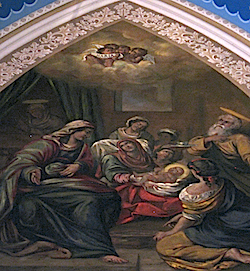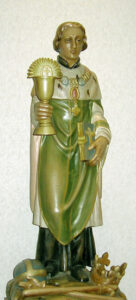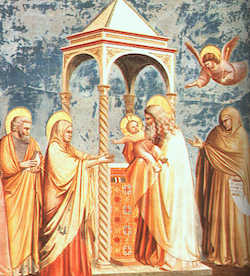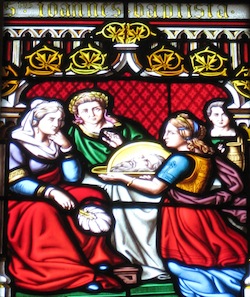 St. Joseph of Cupertino
St. Joseph of Cupertino
Explore the Saints
St. Thérèse of Lisieux
St.Thérèse of Lisieux, also known as “the Little Flower,” lived uneventfully within a convent and battled tuberculosis for most of her life, dying at the age of 24. How did this obscure young woman become one of the most honored saints in the Church?
Thérèse Martin was born in 1873 in Normandy, France. Her mother, St. Zélie Martin, died when Thérèse was four. Nevertheless, Thérèse grew up in the care of loving sisters and her adored papa—St. Louis Martin. Thérèse was a sickly, sensitive child, and she had trouble containing her emotions. Through her constant work to overcome her selfish and overly sensitive idealism, Thérèse discovered the transforming power of love.

When she was fourteen, Thérèse wanted to join the Carmelite convent where her godmother Pauline was a nun. The bishop did not allow her, because of her young age. When Louis took her and her sister Céline on a pilgrimage to Rome, Thérèse broke through the line at the papal audience to the feet of Pope Leo XIII, begging his permission to enter the Carmelites. Pope Leo XIII wisely and diplomatically advised her to follow the judgment of the superiors, and if it was God’s will, then she would surely enter. Thérèse was wildly unsatisfied with this response and refused to leave, until the Vatican Swiss Guards carried her away.
Finally, less than a year later, Thérèse was granted permission to join the Carmelite convent. It is funny that the eager young Thérèse, full of intense desires to be a missionary, chose life in a cloistered convent. Yet it was in the routines of cloistered life that Thérèse found she could prove her love. This burning love of hers that naturally desired to burst out into the world in romantic grand gestures flowered in the routine tasks of cleaning and laundry, and expressed itself in learning humility and charity towards the ordinary women who made up her community. She seized every opportunity to love others more than herself: she smiled at nuns she did not like, she refused to complain, she performed small hidden favors for others. And thus, Thérèse’s “little way” was conceived: to do all things, particularly the small thing and menial things, with great love.
“Love proves itself by deeds, so how am I to show my love?” she wrote. “Great deeds are forbidden me. The only way I can prove my love is by scattering flowers and these flowers are every little sacrifice, every glance and word, and the doing of the least actions for love.”

Thérèse contracted tuberculosis, but she tried to hide her illness, continuing her daily work until her body broke down. She died at the young age of twenty-four on September 30, 1897.
As she approached her death,Thérèse began to write her memoirs under obedience from her godmother Pauline, then the Prioress of their Carmelite convent. One year after her death, her autobiography, L’histoire d’une Âme (Story of a Soul), was published. It became an instant spiritual classic. The wild popularity of her autobiography led to her very rapid canonization in 1925. In 1997, Pope John Paul II declared her a doctor of the Church, a title given to thirty-seven saints who are known for elucidating the faith by their words or example. She is the patron saint of missionaries, pilots, those who are sick, and florists.

The promise of materialism is that we can build ourselves up with what we add to our lives: we buy expensive watches, cars, and clothes to both manifest to ourselves and to signal to others our wealth or status. St.Thérèse understands that desire for greatness, that desire to cement our own worthiness in our own eyes in how others see us. Thérèse’s genius lies in her response to that desire. Her greatness is in her self-divestment, in her intense dedication to pouring out love through the smallest, most insignificant moments of daily life. Her little way shows us that we do not have to be a missionary or martyr to find holiness—we can become a saint by going about the actions of our daily lives with great love.
A statue of Thérèse of Lisieux stands in the Knott Hall chapel. The stained glass window is from the chapel in Morrissey hall, which is named after St.Thérèse the Little Flower; the other wooden statue of St.Thérèse, shown at the left, stands in that chapel. A number of her relics rest in the reliquary chapel in the Basilica.
To learn even more about Saint Thérèse of Lisieux, watch this video lecture from the McGrath Institute for Church Life at the University of Notre Dame.
St. Thérèse of Lisieux, whose little way bears fruit in great love—pray for us!
Image Credit: Our featured image of St. Thérèse is in the public domain. Last accessed September 27, 2024 on Wikimedia Commons.

Search Saints
 St. Joseph of Cupertino
St. Joseph of Cupertino
 Sts. Anne and Joachim
Sts. Anne and Joachim
 St. Robert Bellarmine
St. Robert Bellarmine
 Sts. Cornelius and Cyprian
Sts. Cornelius and Cyprian
 Our Lady of Sorrows
Our Lady of Sorrows
 The Exaltation of the Holy Cross
The Exaltation of the Holy Cross
 St. John Chrysostom
St. John Chrysostom
 Blessed Victoria Strata
Blessed Victoria Strata
 St. John Gabriel Perboyre
St. John Gabriel Perboyre
 St. Nicholas of Tolentino
St. Nicholas of Tolentino
 St. Peter Claver
St. Peter Claver
 Feast of the Birth of Mary
Feast of the Birth of Mary
 St. Cloud
St. Cloud
 St. Eleutherius
St. Eleutherius
 St. Teresa of Calcutta
St. Teresa of Calcutta
 St. Rose of Viterbo
St. Rose of Viterbo
 Pope St. Gregory the Great
Pope St. Gregory the Great
 Blessed Jean-Marie du Lau and the Martyrs of September
Blessed Jean-Marie du Lau and the Martyrs of September
 St. Anna the Prophetess
St. Anna the Prophetess
 St. Pammachius
St. Pammachius
 Feast of the Beheading of John the Baptist
Feast of the Beheading of John the Baptist
 St. Augustine
St. Augustine
 St. Monica
St. Monica
 Our Lady of Czestochowa
Our Lady of Czestochowa

